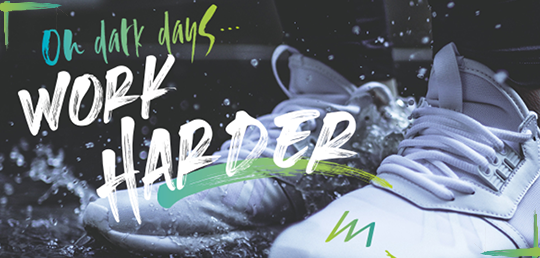
What S.A.D is and how to deal with it

Seasonal Affective Disorder, otherwise known as SAD, is a temporary mood disorder which tends to affect people during autumn and winter and can have debilitating, depression-like effects.
Seasonal Affective Disorder can include the following symptoms:
• Depression
• Lethargy
• Carbohydrate cravings
• Anxiety
• Lack of concentration
• Apathy
• Suicidal thoughts
• Increased appetite
• Irritability
• Loss of libido
• Low immunity status
• Lack of need for social interaction
• Digestive discomfort
What causes SAD
It’s totally normal to feel a bit down in winter, with baltic temperatures in the UK and near endless rain. As the clocks go back, and it starts to get dark at 3:30pm, those of us who work during office hours and indoors can find ourselves leaving the house and arriving home in darkness.
This lack of natural daylight means that our bodies are not able to produce sufficient amounts of vitamin D, which is made when direct sunlight reaches our skin. Vitamin D is essential for healthy bones, teeth and muscles, so in the UK we are recommended to take a vitamin D supplement during autumn and winter. Read more about this on the NHS website.
Why SAD is important
We don’t know much about what causes SAD, though there are common theories within the medical profession. It’s thought that a part of our brain called the hypothalamus is affected when we don’t get enough sunlight. This impedes the production of serotonin (the hormone that makes us happy and regulates our appetite).
People with SAD may overproduce melatonin, meaning they feel tired more often. The body’s circadian rhythm (internal clock) is also disrupted as the sun tells us when we should wake up, feel sleepy, and feel hungry, amongst other important thing.
Motivating ourselves with SAD
SAD can leave us feeling totally exhausted. When it’s cold and dark out, and we’re feeling low, exercise feels like the opposite to what we actually want to do.
However, working out can really help to counteract the symptoms of SAD. Exercise makes our bodies release endorphins, which makes us feel great and can give us a mood boost as well as improving concentration and easing anxiety.
The key to getting over your lack of motivation is to do everything you can to address any barriers. Let’s think of what the issues could be: it’s cold. Im tired. It’s dark. I feel low.
More solutions
So, we put on warm workout gear and do some start jumps to get toasty before we head out. We’re tired so we make ourselves a pre-workout espresso. It’s dark outside, so we’ll do a workout indoors. We’re feeling low, so we’ll give a friend a call and ask for a little pep talk, before throwing on our favourite playlist to lift our spirits.
Whatever your barriers are, you need to find the willpower to find ways to work through them. By addressing them as much as possible, SAD or not, the sense of achievement you’ll gain after you’ve finished (particularly if you didn’t feel like it) will make it all worth it.